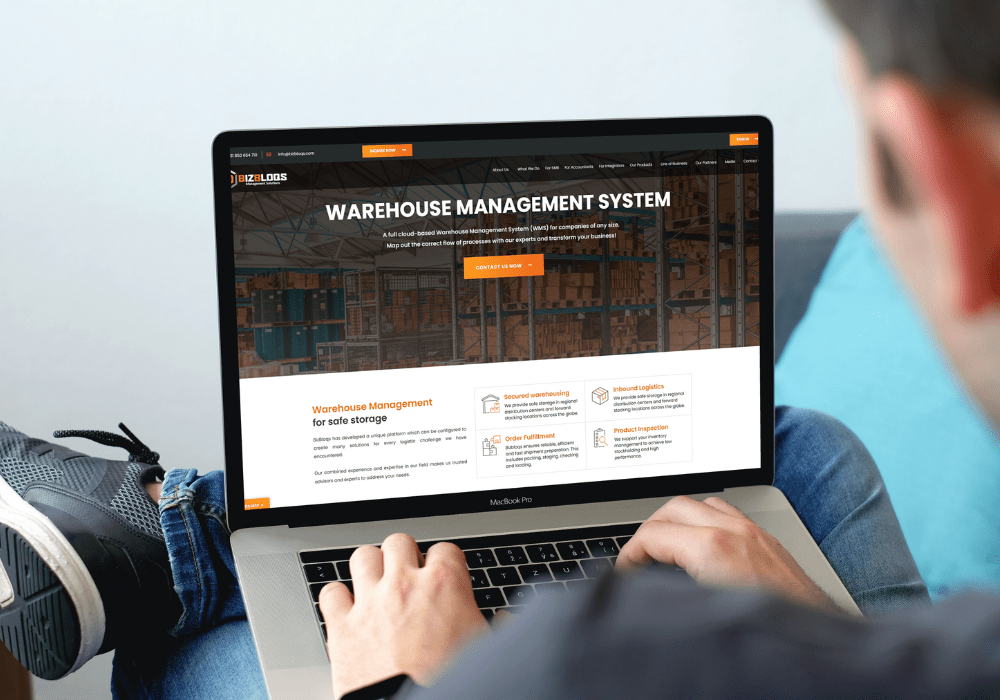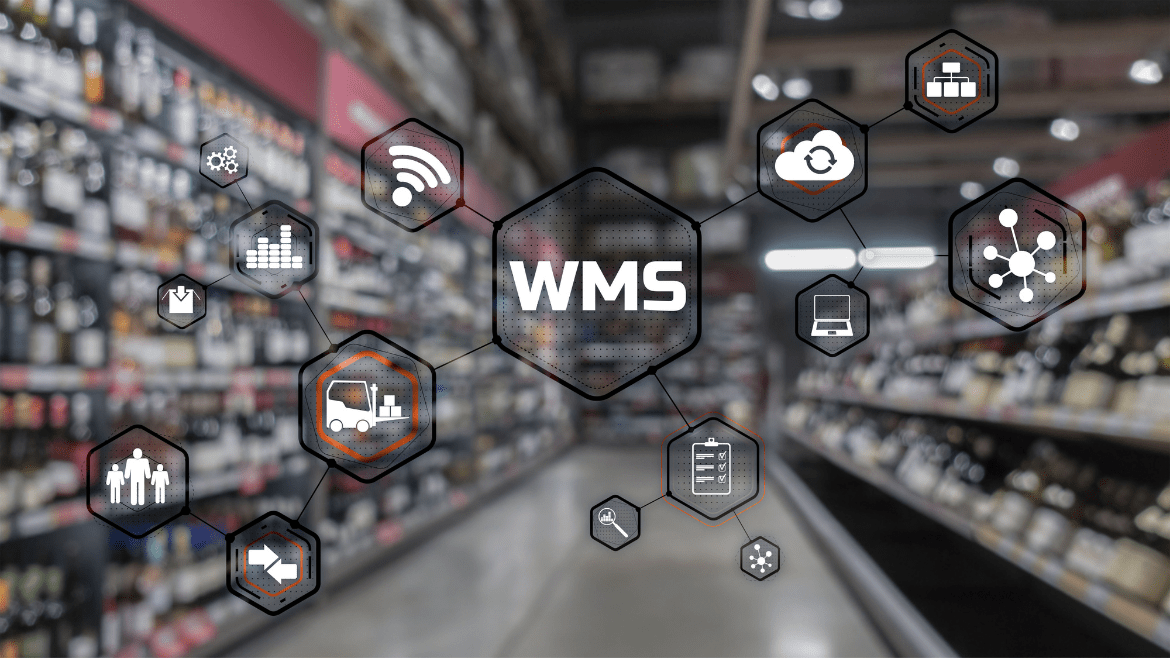In the world of supply chain management, companies face constant changes. Therefore, using an efficient Warehouse Management System (WMS) has become essential for companies with logistics processes. Fortunately, cloud technologies provide new opportunities while implementing a WMS. In this article, we look at the benefits of a cloud-based WMS and discover why more and more companies are choosing to move warehouse management within their organization to the cloud.

What is a WMS?
A warehouse management system is an advanced software solution designed specifically to manage logistics processes within logistics companies. Warehouse management software makes it possible to manage both the supply chain of one warehouse and multiple warehouses simultaneously, without depending on costly on-premise servers. Warehouse management software is like the backbone of warehouse management. Through seamless integration with wms software, you benefit from:
- increased efficiency in the warehouse;
- accuracy in large enterprises;
- higher productivity in the warehouse.
A wms provides real-time visibility into inventory levels, outgoing shipments, order statuses, and more. It gives logistics service providers the opportunity to optimize the entire supply chain. This results in lower costs, and better decisions and allows companies to meet the changing demand for more speed from consumers. As icing on the cake, a wms provides seamless integration with existing business systems, such as the ERP system.
The rise of cloud technologies
An important part of the shift in new technologies is the rise of cloud WMS combined with the Software-as-a-Service (SaaS) model. When the wms runs from the cloud, you get access to data and applications over the Internet. In the old situation, this was not the case and you needed a local infrastructure with on-premise servers. This requires investing not only in wms software but also in your own hardware.
Supply chain management has become easier because of SaaS. Instead of investing in expensive hardware, companies can subscribe to a cloud-based WMS provider. SaaS also makes it possible to link, for example, a manufacturing execution system (MES) or a transportation management system (TMS) to the warehouse management system. This shift has lowered the barrier for smaller warehouses to take advantage of advanced warehouse management functions without having to make huge investments. The result is a lower total cost of ownership in the supply chain.
Benefits of WMS in the Cloud
A wms in the cloud has several advantages, but one of the biggest is lower costs and scalability. After all, with cloud wms, it is possible to make use of shared infrastructure, so you don’t have to invest in on-premise hardware yourself. The ability to quickly implement more storage capacity is another big advantage of a wms. Namely, this reduces initial costs and avoids maintenance upgrades. The wms cloud provider takes care of this, allowing companies to focus on other things.
With real-time data visibility and reporting, logistics service providers keep track of inventory management more easily. With real-time synchronization between different departments and locations, inventory management is always up-to-date. In addition, a WMS offers advanced reporting capabilities. This gives logistics service providers real-time insight into performance and trends. In fact, this logistics software is a combination of management systems, allowing data-driven decisions to be made to improve logistics processes.
Remote accessibility
With a warehouse management system in the cloud, users can access the system at any time and from any location. This gives managers and employees continuous access to important information. Think, for example, of inventory levels and order statuses. This information is always accessible, even when employees are not physically present in the warehouse. Logistics software is usually linked to a mobile app or interface. This allows employees to perform tasks from their mobile devices, increasing productivity.
Unlike traditional warehouse management software, a cloud-based warehouse management system can be used quickly. There are minimal technical requirements, and with pre-configured settings, the system is up and running within weeks. If existing systems need to be linked to the new wms system or if you want to install additional applications, this is also possible quickly. Consider the implementation of artificial intelligence, augmented reality, virtual reality, and machine learning to optimize the warehouse. But also packages for project management and business intelligence.
Warehouse management software as a service
A software solution as a service. That’s what SaaS stands for. Software-as-a-Service (SaaS) is a delivery model of software that allows companies to access their systems over the Internet. WMS software can be considered a form of SaaS because it can enable both small businesses, mid-market or medium-sized businesses, and large organizations to grow quickly. After all, with the SaaS model, investments in hardware, software licenses, and infrastructure are no longer necessary, making the warehouse scalable.
Based on the number of users, companies pay a monthly or annual subscription fee to wms software providers. This ensures that companies of any size can use the wms cloud. The absence of on-premise hardware also makes it possible to reduce the size of the IT department. After all, you can rely on the years of experience of wms software vendors. This not only provides greater convenience and security but also ensures that the wms system meets specific needs.
Considerations when moving to a WMS cloud
In the world of e-commerce, an effective supply chain is essential to business success. However, if you want to switch to a cloud-based warehouse management system, there are some important aspects to consider.
Security and wms software
Make sure the cloud platform meets strict security standards. For example, products like a wms cloud should feature security protocols such as data encryption, firewalls, and access management functionality. With these protocols, corporate data is well protected from potential threats.
Reliability and uptime
In a well-oiled supply chain, it is important that the uptime guarantee is as high as possible. This is because uptime shows how many failures occur on the server. It is also important to be able to access the service provider’s performance history. If the providers have a failover mechanism, you can use this to ensure business continuity.
Scalable and low total cost
If a WMS is scalable then the system grows with the business. Adding additional users, storage or processing capacity should be easy, without running into major supply chain disruptions. Request a free demo to compare WMS systems and ask about any additional costs for customization or support.
Barcode solution – pick it integration options
Check that the wms software can integrate seamlessly with other business systems, such as enterprise resource planning (ERP) or e-commerce platforms. With proper integration, data exchange is easier and more accurate and encourages a smooth flow of information within the company. This, in turn, provides a holistic view of the business as different business processes are connected.
Usability and functionality
Test the functionality of the system by requesting a demo. After all, with a clear interface, managing a warehouse is easier. It is also important to get support when implementing a wms. Find out which vendors offer support and check if a wms help desk is available in case of an emergency. It is also important to check whether regular updates to the wms software are included in the package price.
By considering these aspects, you can make an informed decision when switching to a cloud wms. With well-chosen software, the wms system will meet the specific needs of the company as well as the customer. Wondering what a WMS cloud can improve for your business? Start today and simplify inventory management and the implementation of new systems with BizBloqs!









